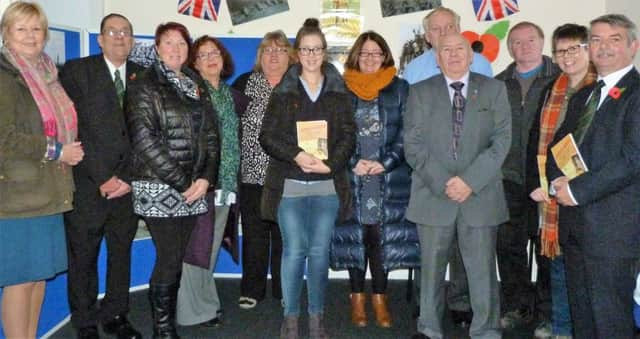Letters from the battlefields


James enlisted at Finner Camp in January 1915 and his correspondence covers the period from 7th October 2015 until 24th October 1918. James was killed in action on the 8th November 1918 in France and is interred in Dourlers Cemetery, and is commemorated in St. Patrick’s Parish Church and Macosquin Parish Church. Poignantly this news came back to Coleraine as the end of hostilities was being celebrated.
The letters are a fascinating collection consisting of 121 letters and 94 postcards dating from 7th October 1915 until 24th October 1918, plus another twelve letters that aren’t dated and through reading them we can follow James Henry throughout his time at war. He writes mainly from France but also from hospital in Dublin and camps in England where he is recuperating. Most the letters act to reassure his family that he is in good spirits and health. We get only small glimpses of what life was like for James and his comrades.
Advertisement
Advertisement
The letters leave behind a legacy, not only of James Henry but of the men of Taylor’s Row, Chapel Square and Coleraine who fought during World War One. They are part of a unique and very special collection that make the war more of reality in Coleraine through one man’s voice. Their importance should not be underestimated, especially in gaining a different perspective and understanding of the Great War and its effect on the town of Coleraine.


The letters are addressed to James’s father – Alexander Henry and to his sister Georgina Leighton (nee Henry) James sister who kept all his correspondence and other items of memorabilia safe and passed them down through her family to keep his memory alive.
The importance of these letters was first recognised by the Building Ballysally Together group which displayed a selection of them in their First World War exhibition in 2014 which they had developed with the support of Causeway Rural & Urban Network Peace Impact Project’. After the exhibition, the decision was made by the Henry Family Circle that the collection should be donated to Coleraine Museum by George Leighton and Isobel Trussler (nee Leighton), Georgina’s last two surviving children so that everyone can access them and learn about James life and experiences. Isobel has since passed away and is remembered by her children and family circle.
‘I am delighted, on behalf of Coleraine Museum, to receive the collection into our care. The mission of the Museum is to collect and preserve material relating to the people and places in the Coleraine area. Our collection relies greatly on the generosity of donations which we preserve and make accessible to others. We were thrilled to receive the unique and very special James Henry letters from his family for the collection’ Sarah Carson, Collections Access Officer.
Full story online!


More
Advertisement
Advertisement
This publication has been developed by Causeway Rural & Urban Network working in partnership with Building Ballysally Together and Coleraine PUL Forum. The project has been funded by the International Fund for Ireland through its Peace Impact Programme (PIP). This publication was collated by Rose Smyth, PIP Project Officer and the cover artwork was designed by Charlie Smyth.
‘Causeway Rural & Urban Network is proud to have supported the development of this important publication which highlights the experiences and sacrifice of Coleraine families in the Great War’ Ann McNickle, Project Manager Causeway Rural & Urban Network
We wish to thank the family circle of James Henry for their support with this publication which will preserve the memory of James and his sacrifice for future generations and especially George Leighton and Isobel Trussler (nee Leighton), who made the decision to donate the collection of letters, postcards and memorabilia to the Coleraine Museums Service so that everyone can access them and learn about James life and experiences.


To Coleraine Museum Service and the NI Community Archive project which will preserve the collection for future generations to read and study.
Advertisement
Advertisement
To Building Ballysally Together for providing catering for the event through Sally’s Café their social economy business. Copies of the publication are available from the café.
* During the First World War, letter writing was the main form of communication between soldiers and their loved ones and the British Army believed that it was crucial to an allied victory both on the Homefront and the frontline.
Soldiers wrote letters in spare moments, sometimes from front line trenches or in the calmer surroundings behind the lines, and their letters offer a powerful and highly personal insight into the experience of war.


The British Army took several measures to censor what information made it home from the trenches. One method of censorship was the field postcard. These printed cards gave soldiers several multiple-choice options which they could cross out if they weren’t relevant.
Advertisement
Advertisement
There were 94 of these field postcards included in the James Henry Collection. While the field postcard and the honour envelope achieved their purpose, the greatest acts of censorship were carried out by soldiers themselves. Many fighting men, including James, were keen to hide the realities of war from their loved ones and simply left out much of what they were going through to spare their loved ones worry and pain.